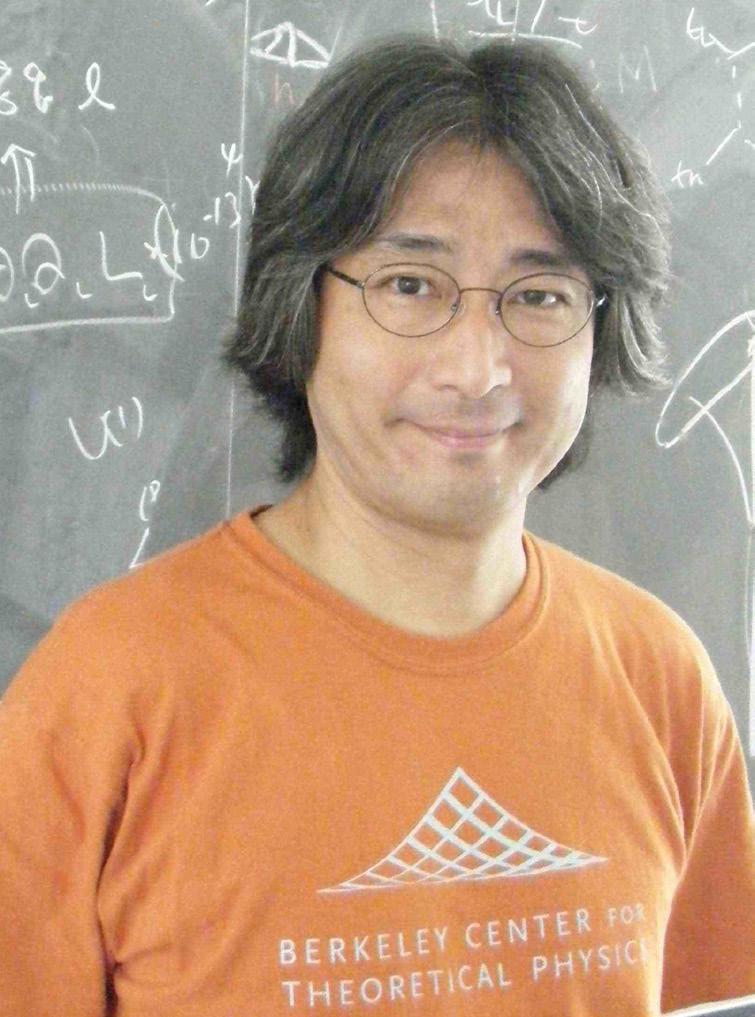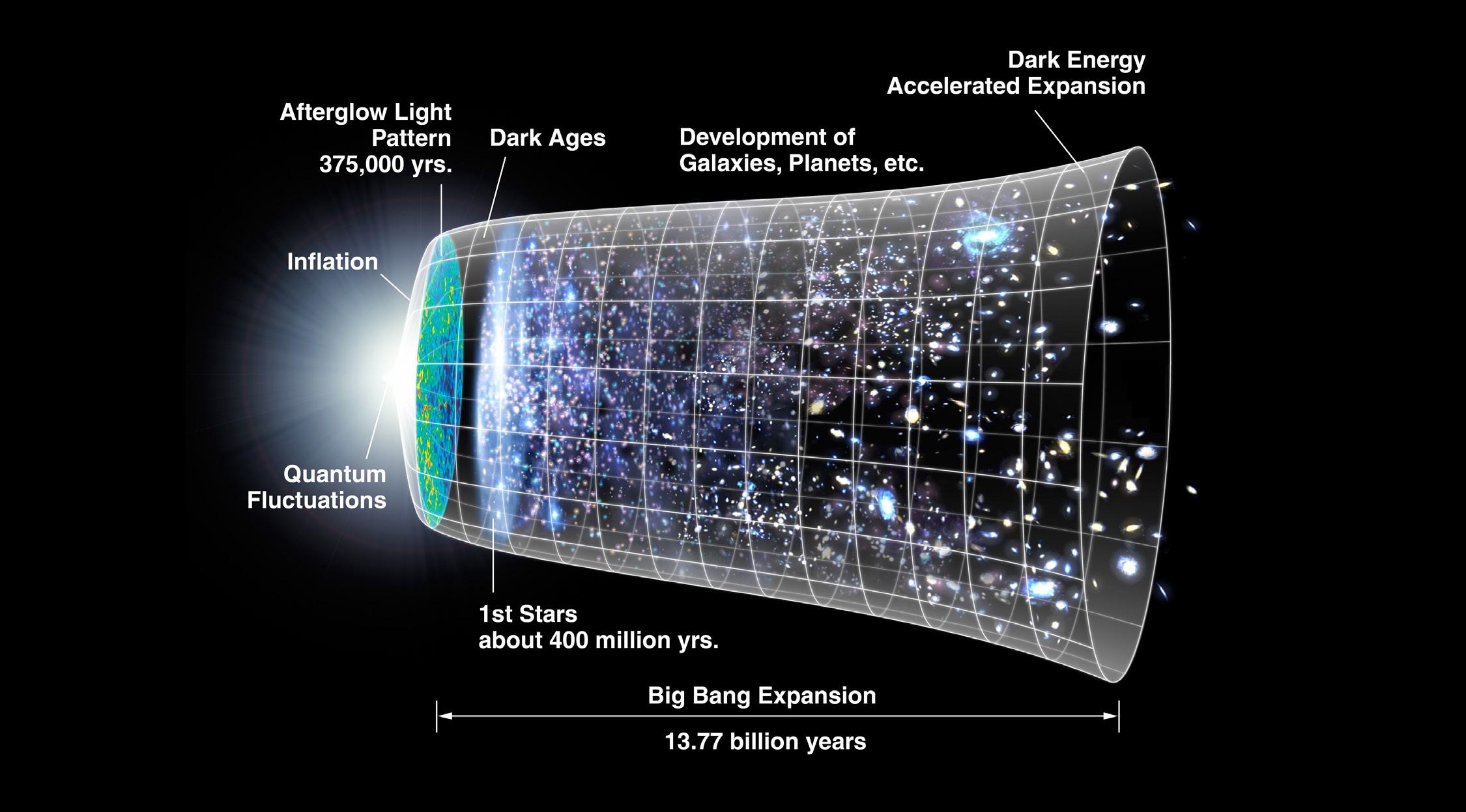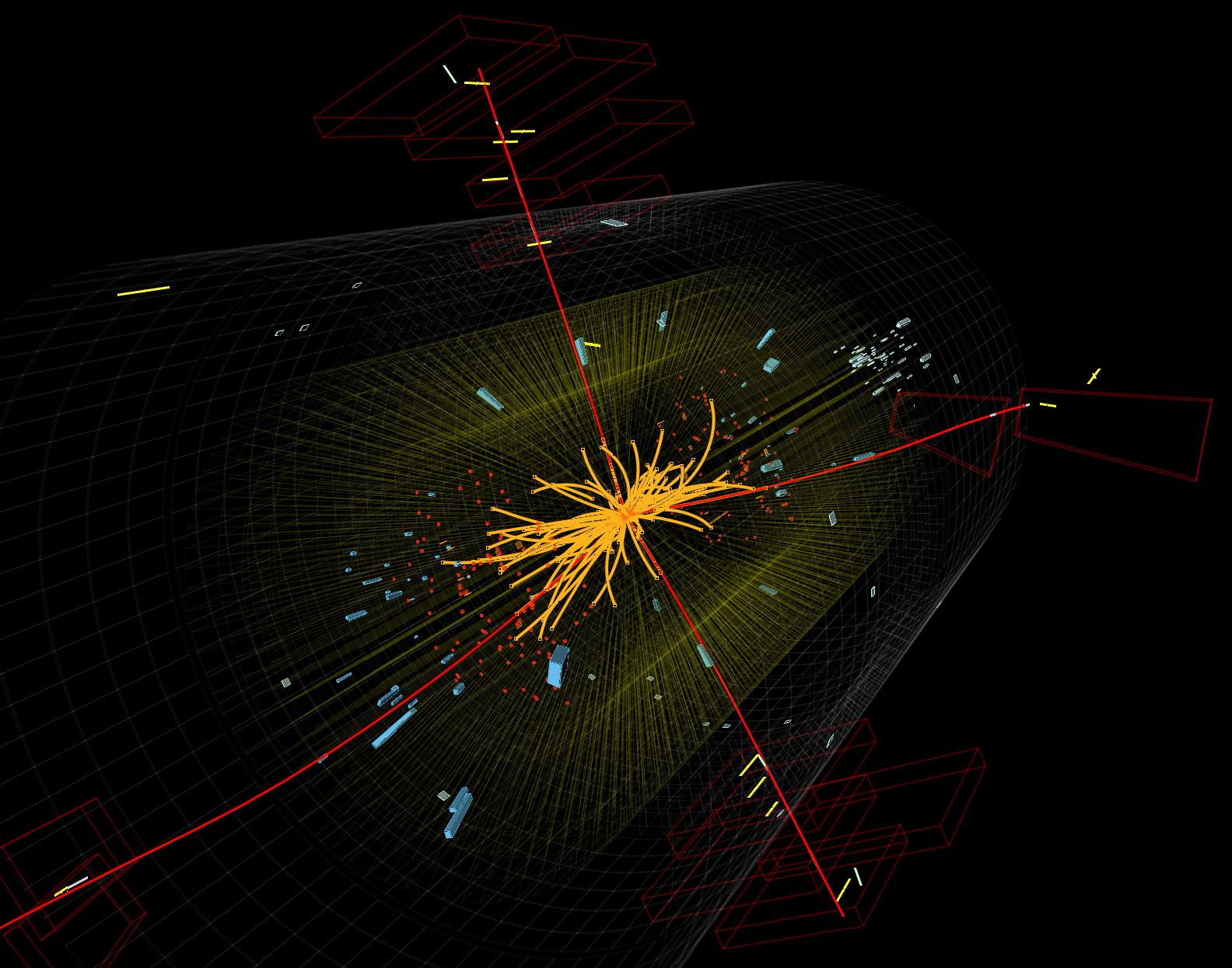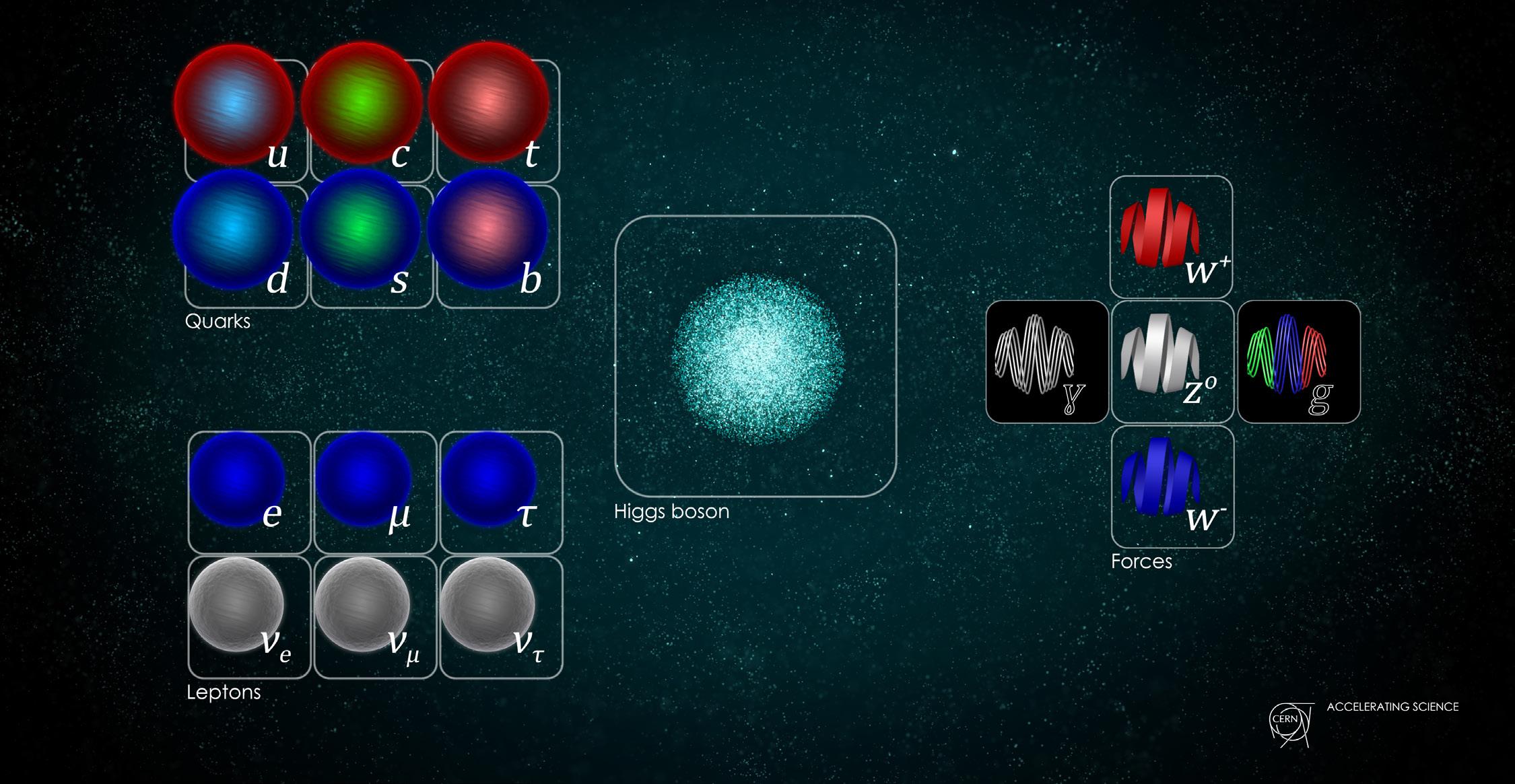
16 minute read
Why Are We Here? A Journey Into The Quantum Universe (Dr. Hitoshi Murayama
Dr. Hitoshi Murayama is a professor in the Department of Physics at the University of California, Berkeley as well as the founding director of the Kavli Institute for the Physics and Mathematics of the Universe at the University of Tokyo. In October 2014, he gave a speech at the United Nations headquarters in New York about how science unites people and brings peace. He received the Yukawa Commemoration Prize in Theoretical Physics and is a Fellow of the American Physical Society and the American Academy of Arts and Sciences. In this interview, we discuss Dr. Murayama’s work at the intersection of theoretical particle physics, string theory, and cosmology.
BSJ: How did your early experiences in Japan shape your career and motivations? What led you to practice physics in both the United States and Japan?
Advertisement
HM: It started when I was a little kid. I had really bad asthma, so every year, I missed quite a few days of school. When I was at home, I did not have anything to do but watch TV, and on TV, there were some very interesting educational programs. These programs are what got me interested in science and math.
Then, throughout university, I had a very keen interest in the area of physics that I am working in right now, namely at the interface of theoretical particle physics and cosmology. It turned out that, back in those days, this was not a very active area of physics in Japan, so I did not really get to further my studies in this area. I was very frustrated, and I felt isolated. I made up my mind that I needed to go to the United States after I got my PhD so that I could really work on what I wanted to. Berkeley was the place for it.
BSJ: Your lecture, “The Quantum Universe,” focuses on how the universe came to be, starting with the Big Bang. Can you explain what the Big Bang is and what happened during it?
HM: Nobody knows, but that is something we would obviously like to understand. It is actually what got me started in physics. We have, however, learned quite a bit about what has happened since the Big Bang. While it has not yet been proven, we believe that immediately after the Big Bang, the universe was even smaller than the size of an atomic nucleus. Then, through inflation, that tiny microscopic universe was stretched out to the macroscopic universe we see today. After which, the huge amount of energy inflation used to stretch out the universe was turned into hot, thermal energy. When the universe was three minutes old, it started to put together protons and neutrons to build atomic nuclei. Much later, when the universe was about three hundred and eighty thousand years old, it became transparent, and light started to move freely for the first time. It took another several hundred million years for the first star to be born. Then, as more stars were born, galaxies and clusters of galaxies began to form until a sort of system was born. We were born. That is how things evolved. So a lot happened, especially at the beginning. `
Why are we here? A Journey Into the Quantum Universe
Interview with Dr. Hitoshi Murayama
BY AMAR SHAH, MICHELLE YANG, AND ELETTRA PREOSTI

Figure 1: A timeline of the Big Bang.2 In the public domain.
BSJ: Can you explain the “Big Rip” model?
HM: We discovered that the universe is expanding back in the 1930s. However, it was not until much later that Berkeley physicist Saul Perlmutter discovered something totally mind boggling: the universe is accelerating. Therefore, there must be something, which we now call dark energy, that is pushing the universe to make it accelerate. The idea of the Big Rip is that if the universe keeps accelerating, at some point it will expand infinitely quickly. An infinitely fast expansion means everything gets ripped apart down to elementary particles. In summary, the universe becomes infinitely big and infinitely thin and that is when it will end.
BSJ: One of the most fundamental particles in the universe is the Higgs boson. What prompted the conceptualization of the Higgs boson prior to its discovery?
HM: The discovery of the Higgs Boson has to do with something called the weak force, which causes the radioactive decay of nuclear isotopes into electrons and antineutrons. The weak force is very much like the electromagnetic force. However, unlike the electromagnetic force, the weak force can only act over very, very tiny distances about a thousandth the size of a nucleus. The electromagnetic force, on the other hand, is a long range force that can act over thousands of kilometers. For example, if you hold a compass, the needle will point towards the North Pole due to the magnetic field of the north pole of the Earth. But, despite acting on different ranges, the weak force and the electromagnetic force are the same kind of force.
So, why do these same forces behave in such a different way? The answer to this question can be found in condensed matter physics and, in particular, superconductivity. Superconductivity is a phenomenon that occurs when cooling a material, such as niobium, results in a complete loss of electric resistance of that material. When you apply a magnetic field to these types of superconductive materials, the electromagnetic force can only act over very small distances (about tens of microns). So, the electromagnetic force, which usually acts over a long distance, becomes short range inside a superconducting material. This caused people to think that the universe could be behaving in the same way. The reason why the weak force acts on such a short range may be because the entire universe is a superconductor causing the electromagnetic force to act only in short ranges. If this is true, then there must be something frozen in empty space that causes the weak force to be short range and electrons to move slowly. That is how people came up with the idea of the Higgs boson.

Figure 2: An illustration of the Higgs boson.3 In the public domain.
BSJ: How was the Higgs boson confirmed experimentally?
HM: We know that Higgs bosons are everywhere in empty space and that they are very tightly packed together. Thus, if you whack empty space with a big hammer, a boson should pop up. In this scenario, the role of the big hammer was played by the Large Hadron Collider, which causes proton collisions that concentrate a huge amount of energy in a tiny portion of space. When a Higgs boson pops up, protons fragment into two photons after they collide. The resulting photons are how the Higgs boson was observed.
BSJ: What is the importance of the International Linear Collider?
HM: While we have been able to discover the Higgs boson using the Large Hadron Collider, we do not have a very clear picture of it. This is because colliding protons against protons is a very messy process. It is sort of like throwing cherry pie against cherry pie. Goo will fly out. In the midst of this messy goo, what we are really looking for is the collision between cherry pits.
The Higgs boson is unlike any particle we have seen before. It is the most important particle we know, but it is also the most bizarre particle we know. We would like to get to know this particle better. Does it have siblings of the same type? Is it the first of its kind? Does it have a whole tribe behind it? That is why we would like to take a better image of the Higgs boson. We also hope that the International Linear Collider can serve the purpose of finding dark matter in the universe. We actually have a lot of high hopes for that.
BSJ: Some of your own research has brought us closer to understanding dark matter. A critical part of this research is the Strongly Interacting Massive Particle (SIMP). Can you explain, in simple terms, what the SIMP is? HM: Many physicists now believe that dark matter is composed of a new kind of particle, meaning that it is composed of point-like objects. When these come together, they are pulled towards each other by gravity, but because they are so tiny, they never interact amongst themselves. They also never interact with us, so there is no way of knowing what they are. But, the idea of the SIMP is that dark matter is actually a composite object, like the cherry pies I mentioned earlier. Then, if dark matter “objects” have size, they may be hitting each other and us at some level. Dark matter being able to interact with itself would in turn help us understand small galaxies called dwarf galaxies because we know that something—likely dark matter—has to be holding galaxies together. The SIMP would then serve two purposes: to help us understand dark matter and explain behaviors in dwarf galaxies.
BSJ: What is resonant self-interaction, and what is its importance in furthering our understanding of dark matter?
HM: One of the keys to understanding dark matter lies in knowing why dark matter particles hit each other more frequently when they move very slowly and less frequently when they move very quickly. The answer to this phenomenon lies in resonance, the idea that when an object vibrates at nearly the same natural frequency as a second object, they will resonate with each other and produce a very clean sound. Dark matter particles can only collide with each other when they are resonating. Thus, in systems like dwarf galaxies where everything is moving slowly, particles achieve resonance and hit each other very often. However, if you look at clusters of galaxies where everything is moving very quickly, there is less resonance between dark matter particles and they do not hit each other as much.
BSJ: How does symmetry play a role in your model of selfinteraction resonance?
HM: Symmetry plays a very important role not only in self-interaction resonance, but in almost all of physics. In fact, Emmy Noether, a German mathematician, theorized that symmetry in systems leads to conservation laws. For instance, the principle of conservation of energy holds because of translational invariance in time. Time has no origin and that is symmetry; when time is shifted, nothing changes. For example, it does not make a difference if you conduct an experiment at six in the morning or seven in the evening. The results will be the same.
Thus, when we analyze complicated systems like self-interaction resonance, we cannot perform calculations very well unless we

Figure 3: Particles of the SM of particle physics.4 In the public domain.
focus on the symmetries of the system. This will in turn lead to conservation laws. Once you have conservation, you can have a handle on how to study these complicated phenomena.
BSJ: We also looked at your research exploring whether the Standard Model (SM) of particle physics, possibly with some extensions, is in the Swampland or not. Can you briefly explain the SM?
HM: The SM is an amazing theory that pretty much explains everything we know in the universe today. The theoretical foundations of the SM began with the discovery of the electron at the end of the 19th century. Then, as we discovered more particles and how they interact with each other, we were able to build a complete framework for the SM. In some cases, the SM has been tested so rigorously that you can make predictions on certain observables, like the electron magnetic moment for up to twelve significant digits.
BSJ: What is the Swampland?
HM: The term Swampland was originally put forth by theoretical physicist Hiroshi Ooguri to describe physical theories that cannot be explained using string theory, a theory that purportedly unifies quantum mechanics and gravity. If true, string theory would be the ultimate theory of everything. Initially, Ooguri created the Swampland after discovering that according to string theory, the amount of dark energy in the universe is decreasing, so the universe should be decelerating. However, we know that the universe is accelerating. Thus, we say that the acceleration of the universe is in the Swampland where you do not want to be instead of the Landscape, a beautiful place where you do want to be.
BSJ: What does UV completion mean in the context of the Swampland?
HM: Atoms are made up of nuclei and electrons. Nuclei are in turn made up of protons and neutrons, and protons and neutrons are made up of quarks. So, as you can see, we have made progress in discovering smaller and smaller particles. Then, UV completion is the idea that you are trying to formulate a theory that works for smaller and smaller distances. In the context of the Swampland, we are trying to bring together two pillars of modern physics which do not mesh well with each other: quantum mechanics and relativity. The hope is to create a UV complete theory that brings together quantum mechanics and relativity and works over very short distances. In this way, we may even be able to understand the very beginning of the universe.
BSJ: What makes an effective low energy field theory?
HM: Once we have a UV–complete theory that works over short distances, we can make predictions on a microscopic level. However, we would also like to make predictions on a macroscopic scale. A low energy effective field theory is how we can achieve this; it would explain why things behave in the way that they do at much longer distances.
BSJ: Is the SM in the Swampland?
HM: The SM is an incredibly successful theory, but it has its problems. It does not explain certain phenomena in the universe. For example, the Higgs boson, which we know to exist cannot be explained through the SM. From what we understand, the SM is not UV complete as we do not think it applies over very short distances. Therefore, it is currently in the Swampland, but we believe that there must be something we can add to it to make it a complete theory.
BSJ: What is charge parity symmetry, and what is the charge parity problem?
HM: First, we must ask, “Why is there matter in the universe at all?” The Big Bang must have produced the same amount of matter and antimatter. Then, by charge parity symmetry, you can swap matter with antimatter. But, we also know that when matter and antimatter particles meet, they annihilate each other. Thus, if charge parity symmetry exists, we would not be here today. That is why there is a lot of research currently going on to look for why charge parity symmetry is somehow a little bit broken.
BSJ: What are some solutions to the charge parity problem?
HM: One of the best solutions we have to the charge parity problem is neutrinos. Since the universe began with equal amounts of matter and antimatter, at some point, the balance between the two must have changed. It turns out that there is only one type of matter particle in the SM that has zero electrical charge: a neutrino. A neutrino is a matter particle, and an antineutrino is an antimatter particle. Since both are neutral and do not have electrical charges, the neutrino and antineutrino may transform into each other. Because of this, we expect that neutrinos probably play an important role in reshuffling matter and antimatter so that we could survive the Big Bang.
In this case, the charge parity violation is among the neutrinos and not among the quarks that build up the neutrons. In fact, some of my current research focuses on detecting the transformation between matter and antimatter by searching for evidence of gravitational waves coming from the early universe.
BSJ: Throughout the course of your career, you have conducted research in a variety of fields relating to modern physics. Do you think we are any closer to having a Grand Unified Theory?
HM: We have already made progress through the SM. Thanks to this discovery of the Higgs boson, we have been able to unify the weak force with the electromagnetic force. The next step is to unify the strong force together with the weak force and the electromagnetic force. To do this, we must look for proton decay. As far as we can tell, the protons in an atomic nucleus seem stable, but over a long period of time, they may disintegrate into photons and positrons. If proton decay does indeed occur, then ultimately every form of matter is unstable. That is a very scary idea. This process, however, does not happen over a short period of time since we know that protons live for 1034 years.
In summary, evidence of proton decay would be actual evidence for grand unification. The Grand Unified Theory comes once you manage to unify the strong force with the other forces. Then, you can turn quark into electron and electron into a quark. That is a process that again we have never seen before, but it is a prediction of the Grand Unified Theory.
BSJ: What is the most important concept or idea about the universe that you think people should take away from this interview?
HM: Physics asks the question: why do we exist, and how did we come to be? It is the kind of question that I hope would resonate with anyone, including students in the humanities who may hate physics from undergraduate classes. But, that is the essence of physics. It is actually a lot of fun, and in some sense, of very personal interest to us as it tries to understand where we come from. For example, over time, we have learned that our bodies actually came from the stars. The carbon, calcium, and iron that your body needs actually comes from old stars, which have since exploded. When they blew up, they dispersed many, many different kinds of atoms into empty space and eventually became dust. In summary, there are concrete things we understand and concrete questions we are yet to understand. That is what we are working towards through physics research. It is a very exciting journey, and it is really fascinating. That is the take home message.
REFERENCES
1. Hitoshi Murayama [Photograph]. http://hitoshi.berkeley.edu 2. NASA/WMAP Science Team. (2006). Timeline of the Universe [Digital graphic]. Wikimedia Commons. https://commons. wikimedia.org/wiki/File:CMB_Timeline300_no_WMAP.jpg 3. CMS Collaboration. (2011). Candidate events in the CMS
Standard Model Higgs Search using 2010 and 2011 data [Digital graphic]. CERN. https://cds.cern.ch/images/CMS-PHO-
EVENTS-2011-010-12 4. Dominguez, D. (2015). Standard Model [Digital graphic]. CERN. https://cds.cern.ch/images/OPEN-PHO-CHART-2015-001-1/










